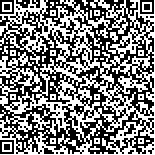| 引用本文: | 朱娴飞,陆雨婷,吴鹏海,马晓双,周立志.近30年长江下游升金湖湿地不同季节景观生态风险时空分析.湖泊科学,2020,32(3):813-825. DOI:10.18307/2020.0321 |
| ZHU Xianfei,LU Yuting,WU Penghai,MA Xiaoshuang,ZHOU Lizhi.Spatial-temporal analysis of landscape ecological risk in different seasons during the past 30 years in Lake Shengjin wetland, lower reaches of the Yangtze River. J. Lake Sci.2020,32(3):813-825. DOI:10.18307/2020.0321 |
|
| 本文已被:浏览 5303次 下载 3654次 |

码上扫一扫! |
|
|
| 近30年长江下游升金湖湿地不同季节景观生态风险时空分析 |
|
朱娴飞1, 陆雨婷1, 吴鹏海1,2,3, 马晓双1,2, 周立志1,2
|
|
1.安徽大学资源与环境工程学院, 合肥 230601;2.湿地生态保护与修复安徽省重点实验室(安徽大学), 合肥 230601;3.安徽大学物质科学与信息技术研究院, 合肥 230601
|
|
| 摘要: |
| 以安徽省升金湖湿地为研究对象,使用1989年、1996年、2003年、2010年和2017年四季Landsat系列遥感数据,构建景观生态风险评价模型,计算不同季节景观生态风险指数,分析风险空间分布及其变化特征,并使用Pearson相关系数分析季节间、季节与年度间景观生态风险相关性.结果显示:(1)不同季节景观生态风险指数有显著差异,生态风险从高到低依次为夏季、冬季、秋季和春季,夏、冬季风险指数平均高出春、秋季37.03%.(2)1989-2017年升金湖湿地景观生态风险指数明显增加,湖区内泥滩、草滩等重要景观类型极易受人类活动影响,逐渐由中风险、较高风险区转变成较高风险、高风险区,且人造表面与草滩面积与较高风险和高风险区面积呈现出一定的协同变化特征.总体上,升金湖湿地以较低景观生态风险和中景观生态风险为主,较高景观生态风险与高景观生态风险主要位于上、下湖区.(3)季节间景观生态风险相关性最高的为秋季与冬季;年度生态风险与冬季生态风险高度相关.因此,近30年升金湖不同季节湿地景观生态风险时空演变趋势体现了该湿地景观格局变化对景观生态系统干扰的压力响应,且秋季与冬季湖区湿地需引起高度重视. |
| 关键词: 湿地 景观生态风险 季节 升金湖 土地利用 |
| DOI:10.18307/2020.0321 |
| 分类号: |
| 基金项目:国家自然科学基金项目(31970500,41501376)资助. |
|
| Spatial-temporal analysis of landscape ecological risk in different seasons during the past 30 years in Lake Shengjin wetland, lower reaches of the Yangtze River |
|
ZHU Xianfei1, LU Yuting1, WU Penghai1,2,3, MA Xiaoshuang1,2, ZHOU Lizhi1,2
|
|
1.School of Resources and Environmental Engineering, Anhui University, Hefei 230601, P. R. China;2.Key Laboratory of Ecological Protection and Restoration of Wetland in Anhui Province, Anhui University, Hefei 230601, P. R. China;3.Institute of Physical Science and Information Technology, Anhui University, Hefei 230601, P. R. China
|
| Abstract: |
| Based on the Landsat series of remote sensing data of Lake Shengjin wetland in 1989, 1996, 2003, 2010 and 2017, the ecological risk assessment model was built, the ecological risk index of different seasons was calculated, and the spatial distribution of ecological risk and its variation characteristics were analyzed. Meanwhile, the Pearson correlation coefficient was used to analyze the ecological risk correlation between seasons, seasons and years. The results showed that:(1) there were significant differences in ecological risk index in different seasons. The ecological risk from high to low was summer, winter, autumn and spring. The summer and winter risk index was 37.03% higher than that in spring and autumn. (2) In 1989-2017, the ecological risk index of Lake Shengjin wetland increased significantly. The important landscape types such as mudflats and grasslands in the lake area were highly susceptible to human activities and climate change, and gradually changed from medium-risk and high-risk areas to high risk, high-risk area. And the artificial surface and grassland area and the area of higher risk and high area show characteristics of certain synergistic change. In general, the Lake Shengjin Reserve is dominated by lower landscape ecological risks and medium landscape ecological risks. Partly higher landscape ecological risks and high landscape ecological risks are mainly located in the upper and lower lake areas. (3) The high correlation of ecological risks occurred between autumn and winter; the annual ecological risk is highly correlated with winter ecological risk. Therefore, the spatial-temporal evolution trend of the ecological risk in different seasons during the last 30 years reflects the response of the landscape pattern change to the landscape ecosystem disturbance, and the autumn and winter lakes wetlands need to be highly valued. |
| Key words: Wetland landscape ecological risk seasons Lake Shengjin land use |